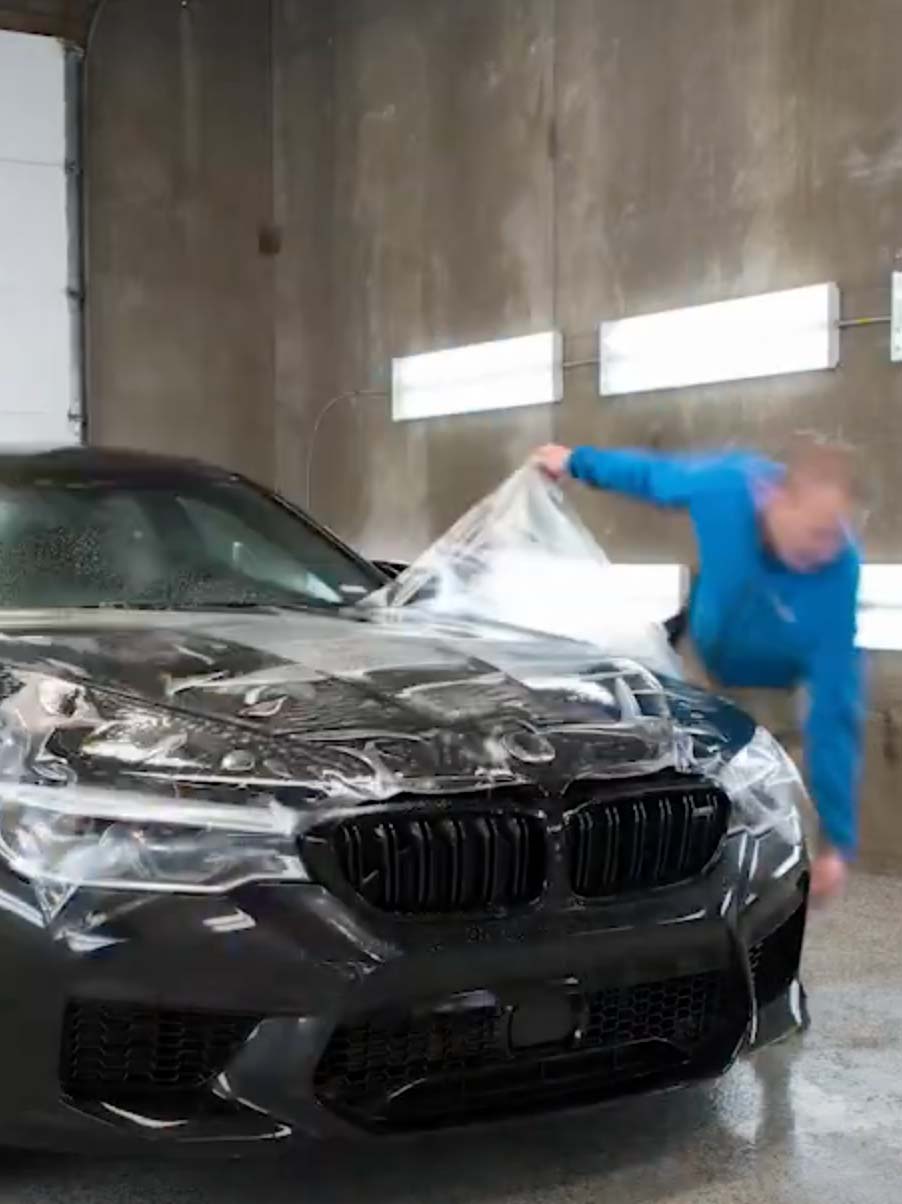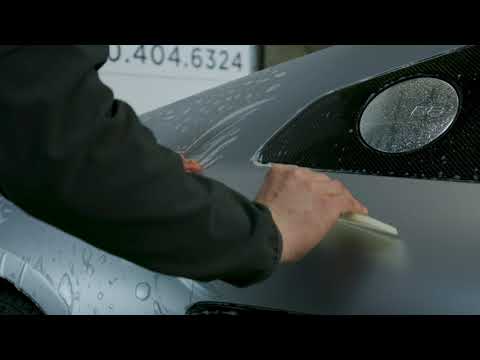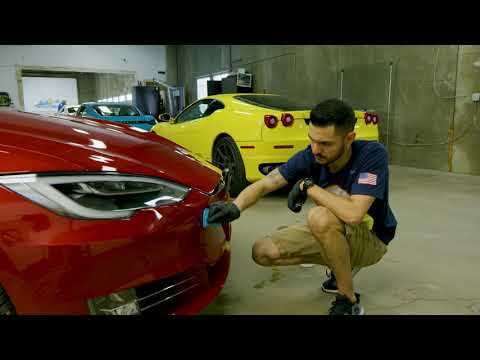True car enthusiasts make the investment in a professional ceramic coating, knowing there's no substitute for its long-lasting performance and deep mirror shine.
Unfortunately, many consumers overexaggerate the benefits, mistakenly believing ceramic coatings are bullet-proof. It is true that they're undeniably more durable than wax or at-home ceramic products. Still, professional ceramic coatings need regular maintenance to deliver years of steady protection.
When you consider their expense, taking time to extend your ceramic coating's life is a smart idea. To help you get the most out of your investment, we'll show you how to maintain the ceramic coating on your car the smart and easy way.
- Why You Should Maintain Your Ceramic Car Coating
- Removes Damaging Agents
- Washing Your Car is the Key
- Retains the Shine
- Reduces Hydrophobicity Loss
- How to Maintain the Ceramic Coating on Your Car
- Wait to Wash
- Wash Your Car Once a Week
- Use Car Wash Shampoos Over Household Soaps
- Use the Two-Bucket System for Hand Washing
- Towel Dry Your Car
- Apply Maintenance Products
- Talk to Your Detailer About Ceramic Coating Maintenance
Why You Should Maintain Your Ceramic Car Coating
Ceramic coatings seem easy to apply, so a lot of consumers try DIY options when they're first starting out. They don't realize that once the coating cures and creates the bond with your car's clear coat, it seals everything in place, imperfections and all. Any dirt, swirl marks, or smudges can last months or even years unless you remove ceramic coating from your car and start all over.
When they understand the level of precision, prep work, and elbow grease involved, most consumers turn to professionals. Experts offer the skill, controlled environment, and equipment to deliver perfect ceramic coatings the first time.
With professional detailers, you also enjoy the advantages of professional-grade nano-ceramic coatings. Let's look at how washing and conditioning your ceramic coating can help you maximize its benefits.
How to Choose a Reliable Ceramic Coating Installer?
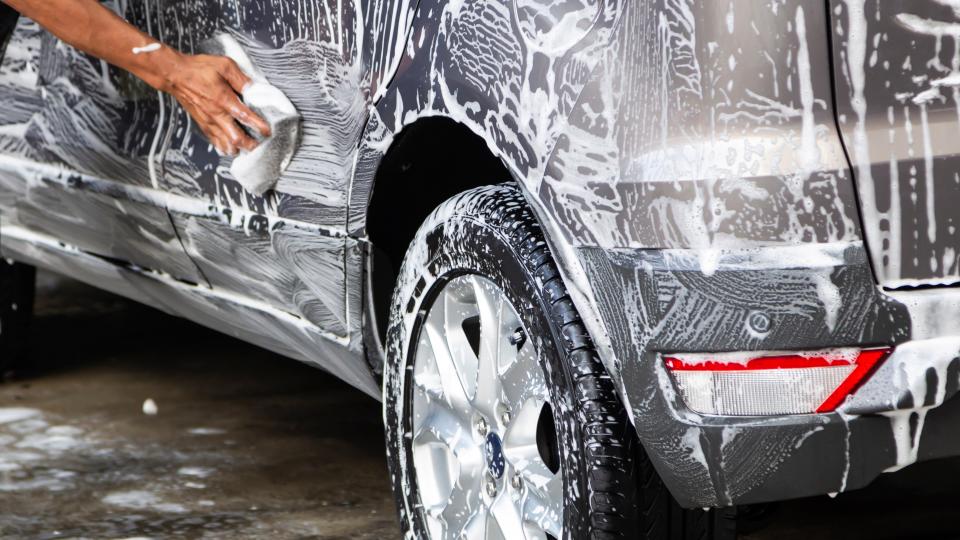
Removes Damaging Agents
Professional nano-ceramic coatings achieve a 9H rating on the pencil scale, indicating the highest level of hardness and protection. This should not be confused with the Mohs scale, which puts a 9H just below diamond-level hardness.
Silica-based liquid nano polymers fill the smallest imperfections in the clear coat, creating a strong bond with the car's surface. When it cures, it achieves quartz-like hardness and a near-perfect flat surface.
The strength and smoothness combine to supply a protective car coating that resists UV rays, water, and a host of everyday dangers to your car. It can endure abrasive impacts from debris and precipitation while also creating low surface energy.
Low surface energy means that a ceramic coating's molecules don't attract other molecules. This is how a ceramic coating attains the superior hydrophobic quality that makes the water sheet off in an instant. It also applies that same resistance to chemicals, mud, bird droppings, bugs, and numerous other environmental hazards damage car paint.
The problem is that nothing can offer perpetual protection. Every second of exposure to the elements entails some wear, and there are substances that will grab hold of your car's surface regardless of the surface energy.
If you subject your ceramic coating to constant exposure to environmental threats, you will expedite its failure. Contrary to a popular myth, the ceramic coating won't peel off but rather gradually wear down, exposing the clear coat underneath.
Part of maintaining your car against that kind of accelerated wear was keeping it housed and covered when possible. Reducing its exposure to sunlight, weather, and assorted debris will keep it performing when you need it.
Washing Your Car Is the Key
Storage is essential, but the critical responsibility when it comes to maintaining your ceramic coating is a regular wash. When you use your vehicle, its ceramic coating does an exceptional job resisting gunk and grime.
But it can't stop everything from clinging.
If you don't stay disciplined in washing your car, stains can grow, and acidic substances can take their time eating away at your ceramic coat. Plus, allowing a build-up of grime gives water and other particles the convoluted surface they need to stick and do their own form of damage to your car.
With attentive hand washing done regularly, you can remove these contaminants before they can do extensive damage. With post-wash products, you can even revitalize much of the protective and cosmetic qualities of your ceramic coating.
The Real Truth and Myths about Ceramic Coating

Free Download: How to Prepare a Tesla for Ceramic Coatings
Retains the Shine
A pristine professional automobile ceramic coating produces one of the deepest wet shines and richest color enhancements of any car product. Ceramic is a smooth application that boosts the light reflection of the underlying clear coat and paint layers. With its resilient high-gloss finish, a quality coating will keep your car show-ready every time you leave the driveway.
Without proper care maintenance, the protective layering will thin and lose its luster. If you let any debris sit on your car, you'll lose the reflective surface that creates the smooth, unbroken shine.
Reduces Hydrophobicity Loss
Silica, or silicon dioxide, is the chemical foundation for ceramic coatings. The compound gives your car coating the protective hardness of quartz, a natural form of silica. Perhaps a more important characteristic of silica is its hydrophobic quality.
As mentioned, ceramic coatings boast low surface energy, which keeps water from attaching and spreading across the car. While car waxes achieve a water resistance that causes water to bead neatly on the surface, ceramic coatings instead direct water straight toward the ground in sheets. When it comes to drying and avoiding the damaging effects of sitting water, a ceramic coating's ability to shed water has clear advantages.
If you neglect to wash your car, you can allow the elements to slowly work it down to the clear coat. The weaker clear coat will capture more water, allowing acidic contaminants and mineral deposits to leave hard water stains and degrade your car's surface.
Storing your car and protecting it from UV is equally important to maintain the water-sheeting qualities of your car.
Among its advantages over waxes and consumer products, ceramic coating is preferred largely due to its ability to deflect UV light. It excels at protecting the paint from oxidation and molecular breakdown that causes fading.
But like a bullet-proof vest, it can only handle so much. Over time, excessive UV exposure will damage your ceramic coating. Before that, however, it will raise the surface energy of the coating as it beats down, eroding your coating's hydrophobic ability to dispel water.
How to Maintain the Ceramic Coating on Your Car
The best approach to maintaining car coating products is a combination of storage and washing. If you don't use your car often, covering and storing your car maximizes the lifespan of your coating. With proper storage, you can defy the relatively short lifespan of carnauba wax, even going a couple of years without having to touch it.
Of course, ceramic coatings are really for our daily drivers to maintain their head-turning appeal as long as possible. Washing, covering, and parking your car in a garage every day is a bit labor-intensive.
Parking your car in a garage is the most effective and easiest way to protect from weather, sunlight, and other damaging agents. Unfortunately, many of us have to settle for parking our primary vehicle in the driveway.
To protect your car outside, you need to consider its vulnerability.
How much sunlight will it get? How much rain are you expecting? Is it under a tree that sheds acorns that could dent your roof?
There are a ton of environmental factors that could potentially harm your ceramic coating. The level of danger should direct the measures you take to prevent any damage.
A portable carport is the most efficient way to keep your car protected. You can keep it set up and park under it every day, shielding your car from the sun, precipitation, and anything else raining down from above.
For more protection, you can use a car cover for security on all sides. Doing so can be helpful if you park near a heavily used road. If a car driving by splashes puddle water or kicks up snow, a cover will give you protection where a shelter cannot.
When you do opt for a car cover, make sure your car is clean and dry before putting it on. If you're not careful, trapped moisture and dirt can stain and scuff your coating when you toss a cover over it.
Now that we know how to protect our car let's go over the best practices for washing your ceramic coating.
Wait to Wash
A professional ceramic coating takes a few days to cure, so washing immediately after applying it can undo your detailer's hard work. Give your ceramic coating at least seven days to harden before washing.
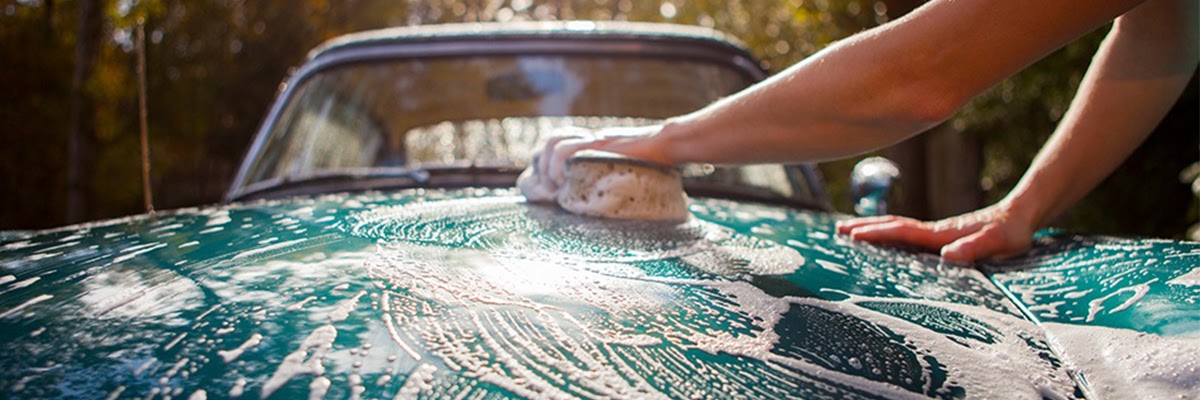
Wash Your Car Once a Week
Maintaining a weekly washing schedule can keep you disciplined in maintaining your ceramic coating. Make it a Saturday morning ritual. If that sounds like too much, make sure you wash your car at least once every two weeks.
It may sound like a time-intensive chore, but you need to skip the automated car wash and find time to hand wash instead. The harsh soaps, mop-like rollers, and brushes in car washes will damage your ceramic coating or leave undesirable swirl marks that mar the surface.
Washing your car regularly keeps your ceramic coating operating at peak performance, which will make washing a much quicker chore. Any mud, tree sap, bug guts, or other stuck-on material will slide off with ease as your mitt glides over the surface of your car. Rinsing water will run off in sheets, cutting your drying time in half.
Pick a time or place that limits sunlight exposure during the wash. If you subject your car to the sun's heat, you could potentially crack the ceramic coating over time. At the same time, the heat can rapidly dry the wash water, causing spots and streaks.
To avoid all of that, wash your car in the early morning or evening. If you have a shady spot or, better yet, an enclosed garage, feel free to wash at any time of day.
Use Car Wash Shampoos Over Household Soaps
Automotive shampoos and soaps contain fewer harsh, corrosive chemicals. Choose products specifically designed for cars that are pH neutral and wax-free to maintain your ceramic coating's hydrophobic qualities.
Use the Two-Bucket System for Hand Washing
Maintaining a clean wash mitt or microfiber cloth is critical to reducing swirl marks from dirt and other damage. The best way to ensure this is the widely accepted two-bucket system of handwashing.
The concept is simple enough, as you use two separate clean buckets, filling one with clean rinse water and the other with soap and water.
Both buckets should have a grit guard. You can even use a mop bucket for rinsing so you can wring out extra dirty water.
Wash your car by starting at the top and working your way down. Break your wash into manageable sections, rinsing and soaping your mitt after each one.
Wheels are bombarded with particularly abrasive contaminants. Wash your wheels last to prevent any damage to your paint's ceramic coat. Better yet, use different buckets for your car's body and wheels.
Towel Dry Your Car
Don't airdry your car because evaporating water will leave spots. Some people say that if your car sheets water well, you can use a leaf blower to clear the remaining water. We prefer a clean microfiber towel over anything to keep contaminants from spreading across your car.
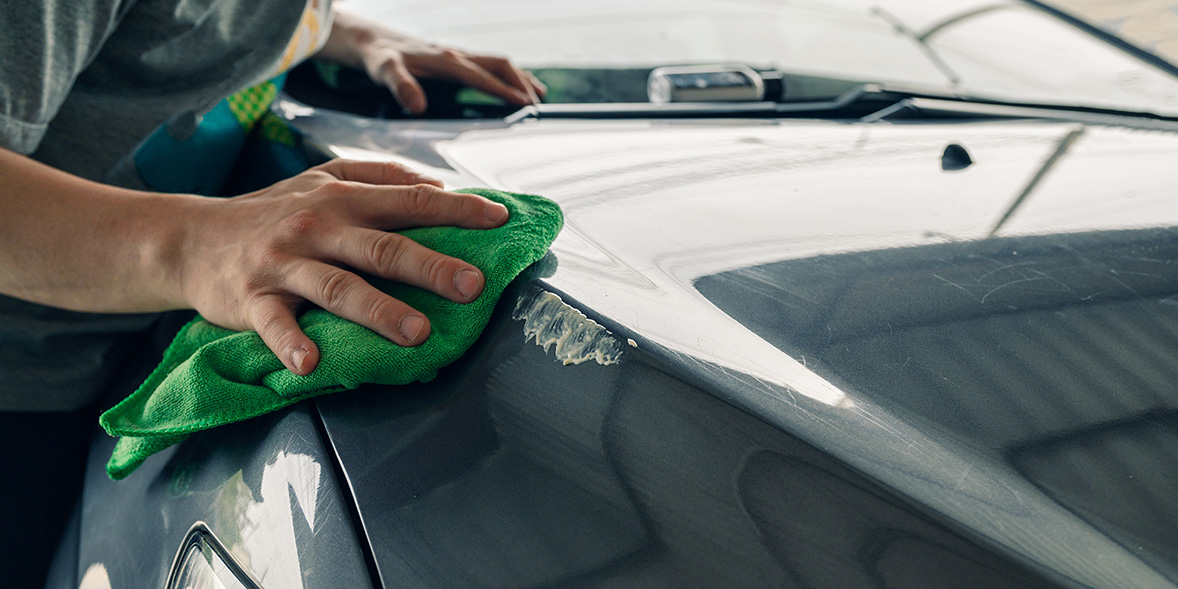
Apply Maintenance Products
You can enhance the benefits of your ceramic coating with a number of post-wash sprays. The most popular option is SiO2 spray, which applies the same silica-based compounds that give ceramic coatings hydrophobic protection.
Try to limit your maintenance products, as multiple applications can reduce performance and increase wear. Talking to your detailer about upkeep is crucial to finding the right product.
You don't need to use boosters after each wash. Apply them every three months or so for the best results.
Talk to Your Detailer About Ceramic Coating Maintenance
Your detailer should be your number one resource for car coating advice. They know the ins and outs of your coating's composition, so they'll know what products and practices will work best to extend its life. Schedule an annual checkup with your detailer to have them inspect your ceramic coating and revitalize your car's looks.
Want more tips on how to maintain the ceramic coating on your car? Follow our blog for expert advice that can save you time and money in keeping your car looking fresh every day.






